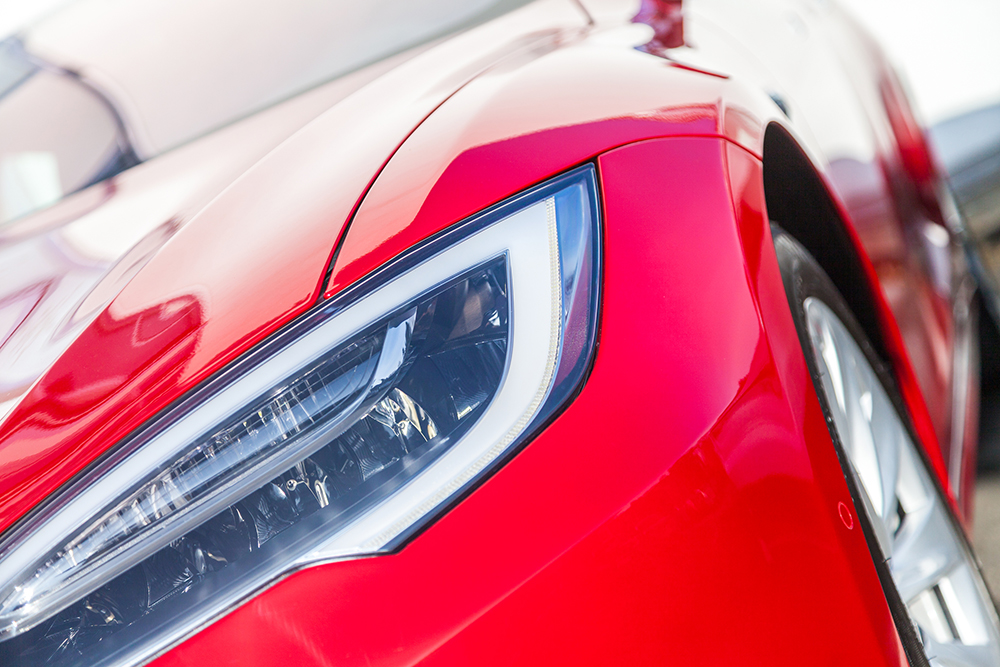Tips To Keep Your Ride Gleaming Throughout The New Year

One car care expert cringes when he thinks about the kinds of products he used as a young man on his deceptively fast small car.
Forrest Tosie, the vice president of sales at Mothers Car Care Products, can forgive himself when he considers the trauma he inflicted on his 1971 Pinto. The mid-1970s simply didn't have the plethora of choices available to consumers today.
Pre-winter prep meant using harsh chemicals and a spray nozzle attached to a hose. There were some expensive products available made for aircraft and a very small selection of vehicle wax offerings. Tires and wheels? Good luck.
“We would wash with whatever we had available,” remembered Tosie, who grew up in the small town of Arnold, Mo.
Early days of car care
Too often that meant dish detergent and harsh brushes. Not that it affected his Pinto’s surprising performance.
Outwardly the car was milktoast, dark brown with black vinyl interior. Tosie bought it used for $1,200 and logged 40,000 miles by the time he sold it years later.
Under the hood Tosie installed a beast. He drove a souped up 1971 Pinto that churned out 180 horsepower. It clocked a quarter mile in 12-plus seconds at a time when most street cars chugged along at almost 15 seconds–like a gazelle racing an elephant.
No one expected the self-described 5’6” band geek driving a cheap brown economy car to be much of a challenge. Weekends he put on his best poker face and cruised the main street between Steak & Shake and White Castle looking for kids driving expensive rides their parents had purchased for them.
He always had takers. They would meet across the county line where two traffic signals were separated by a quarter-mile length of road. A straight road with no obstructions–a perfect scenario for a modified Pinto outfitted with a turbocharger.
“Back then few people even knew what a turbo charger was,” the smiling Tosie said. “I would open up the hood and tell them it was an extra alternator for stereo system.”
The skinny kid who played trumpet accumulated a wallet full of bills that went toward his Pinto upgrade and car care fund as well as financing musical interests.
Saving time with fewer products
Tosie was proud of his unlikely race car. Every week he would wash it and every other week he also would wax it from roof to wheel.
“We would wash with whatever we had handy,” Tosie recalled about the era before car care turned into a multibillion dollar industry.
Household products would do. That meant dish washing soap, blue window cleaner, powdered sink cleaner, scrubbers for wheels and wet towels for seats.
“Sometimes we used aircraft wax but it was hard to work with,” said Tosie, who joined Mothers in the early 1990s.
As the car care industry evolved, Tosie replaced all those kitchen products with safer, more effective products designed specifically for automobile finishes. One trend has emerged during the past 25 years: Fewer products are needed to do the same job that previously required a bagful of solutions.
Car care in winter
As a result, car care has become less labor intensive and faster to apply.
“Homeowners turn off outdoor faucets in winter where I live,” Tosie said. “Yet, car care is a year round job and helps protect your vehicle during harsh weather.”
Tosie shared his secrets to keeping a vehicle looking great throughout winter. His list includes things that may be accomplished efficiently in a home garage.
Tips for winter car upkeep
- Feel the paint surface of your vehicle. Is it “bumpy”? Use a synthetic “clay bar” or “clay pad” to remove embedded contaminants–winter road grime, road salts and calcium chloride used to de-ice roads, sap and soot. If the surface feels bumpy, use the clay bar t leve the paint smooth--making wax application easier and faster.
- Clean both sides of wheel surfaces. Visit a local automated car wash–the sprayers are perfect for removing brake dust, road salts and grime. Bring along a wheel brush, wheel cleaner and eye guards to protect against splashes or mist.
- Wax your paint and wheel surfaces to add a layer of protection against road salts and grime. Quick detailer products and waterless wax are easy to use when washing your vehicle outdoors is not an option.
- Vacuum carpets and the trunk area frequently–at least once a week–and cover them with all-weather mats. Eliminate allergens and grime by hosing off all-weather mats.
- Apply a fabric guard on carpeted surfaces and cloth seats. Use products designed for automobile interiors to prevent spills and moisture from wet shoes from soaking into fibers and causing mold.
- Clean both sides of all glass surfaces to improve visibility during long winter nights. Outgassing from cabin fabrics causes a thin film to form on the inside of window surfaces. Ammonia-free glass cleaner designed for vehicles can cut through the haze and won’t harm window tint, Tosie said.
- Protect seats from moisture and sediment. Use an upholstery cleaner and conditioner. Look for products that work for leather and vinyl surfaces.
“The better you protect your seating areas, the easier it is to clean up spills when traveling this winter,” Tosie said.
- Use microfiber towels to apply cleaners and protectants to vehicle surfaces. Spray the product on the towel, not directly on the vehicle, This process eliminates overspray onto adjacent surfaces and helps reduce the amount of product required.
- Clean headrest areas to remove stains, accumulated sweat and hair oils. The latest upholstery cleaners may be used on multiple surfaces such as leather, vinyl and rubber.
- Wipe off coffee and soda spills quickly to reduce odors and help prevent mold.
“Maintenance is always easier and cheaper than restoration,” Tosie said. “Multi-surface products save money, save time and make it easy to care for your car throughout winter.”